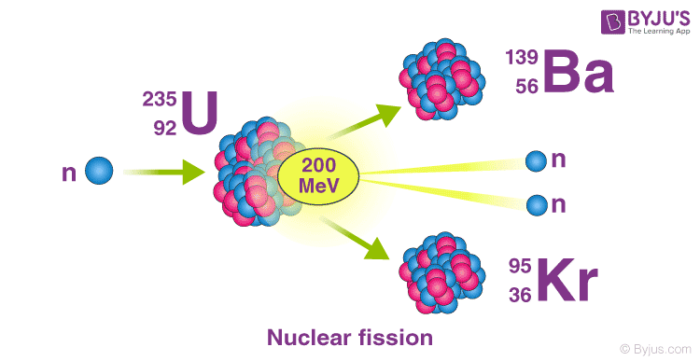The yield of a nuclear reaction often beckons the inquiry: is it merely a quantitative measure, or does it embody deeper, more nuanced implications about the nature of matter and energy transformation? To grasp the concept of yield, one must embark upon an exploration of its definition, its relationship with energy in nuclear processes, and its significance in both theoretical and practical applications. This article seeks to elucidate the physical meaning of yield while simultaneously posing a challenge: can one truly appreciate the intricate dance of particles and energy without comprehending the core significance of yield in nuclear reactions?
To commence this intellectual journey, one must first define what is meant by the yield of a nuclear reaction. In its essence, yield signifies the amount of a product formed as a result of a nuclear reaction, typically expressed as a fraction or percentage of the theoretical maximum. In the context of nuclear physics, it is often measured in terms of the number of atoms or molecules produced, or the energy released. The yield can vary dramatically depending on the specific reaction, the conditions under which it occurs, and the initial constituents involved. Thus, the yield of a nuclear reaction not only quantifies output but also facilitates a deeper understanding of the underlying mechanisms at play.
As one delves deeper into the concept of yield, it becomes evident that it is intrinsically linked to the energy balance of the reaction. The principles of conservation of energy dictate that during a nuclear reaction, there must be an account of energy input and output. Interestingly, nuclear reactions tend to release a tremendous amount of energy, which can be attributed to the binding energy of the nucleus. This energy is derived from the mass-energy equivalence principle articulated by Einstein, seen in the famous equation E=mc². As particles undergo transformation within the nuclear realm, the yield reflects the efficiency of this energy release. A high yield indicates not only a more complete reaction but also a greater release of energy, highlighting the efficiency with which nuclei convert mass into energy.
Consider the example of nuclear fission, a process wherein a heavy nucleus splits into smaller nuclei, releasing energy. In this context, yield can vary significantly based on the choice of fissile material and the specific reaction conditions. Achieving a high yield in fission is a paramount concern for both theoretical physicists and practical applications, such as in nuclear reactors or atomic weaponry. Herein lies the challenge: how does one optimize conditions to maximize yield? Factors such as neutron flux, moderator type, and reactor design play critical roles in influencing yield. The stakes are heightened, as a higher yield in nuclear fission equates to more energy for electricity production or, conversely, more destructive potential in weaponry.
Nuclear fusion provides another fascinating context in which to explore yield. In fusion, lighter nuclei combine to form a heavier nucleus, a process that powers stars, including our Sun. The yield in fusion reactions, such as those occurring in stars or in experimental fusion reactors, can be particularly low due to the extreme conditions required—high temperature and pressure. Achieving a viable yield in controlled fusion has been a longstanding challenge for physicists. It raises the question: are we on the cusp of a breakthrough that will allow humanity to harness the power of the stars? If scientists can discover a method to present favorable conditions, the implications for energy generation on Earth could be monumental.
The significance of yield extends beyond theoretical considerations, as it has pragmatic implications in various fields, including nuclear medicine, radiochemistry, and astrophysics. In nuclear medicine, for instance, the yield of radioisotopes can determine the effectiveness of diagnostic imaging or treatment efficacy for various diseases. Hence, optimizing yield in the production of isotopes is essential for ensuring high-quality medical applications. Similarly, in astrophysics, understanding the yield in stellar nuclear reactions informs models of stellar evolution and nucleosynthesis, elucidating the formation of elements in the universe.
In summary, the yield of a nuclear reaction serves as both a quantitative measure and a profound indicator of the intricate processes governing atomic transformations. It encapsulates the delicate balance of energy and matter while simultaneously revealing the complexity of nuclear interactions. Those who seek to grasp its significance must grapple with the underlying principles of nuclear physics and consider the broader implications of yield in our understanding of the universe. As we ponder these concepts, we must challenge ourselves: are we prepared to confront the implications of harnessing nuclear yield? In a world that continually seeks innovation, the exploration of yield in nuclear reactions remains a crucial yet stimulating endeavor.












